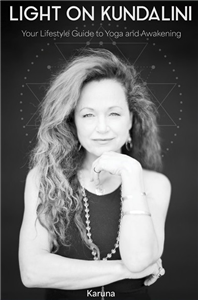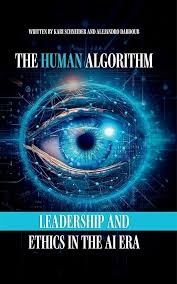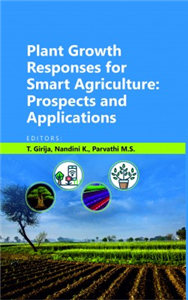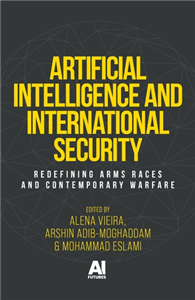Your Search Results
-
Promoted ContentHumanities & Social SciencesJune 2010
Redefining the French Republic
by Alistair Cole, Gino Raymond
Newly available in paperback, Redefining the French Republic is an innovative work. Explicitly adopting a multidisciplinary approach, the book investigates continuity and change in contemporary French politics, society and culture. The chapters go beyond the familiar question of whether the Republic is acting in accordance with its vocation, to address the issue of whether that vocation is still viable. Drawing on contributions that reflect a variety of methodological approaches, ranging from theoretical speculations and modelling to the interpretation of fieldwork data, this study examines the dynamics of the relationship between the Republic and its constituencies, in the fields of political relations, territorial identities, social movements, public policy and foreign policy, and in each context juxtaposing what is perceived as the model for that relationship with the current reality. France in the twenty-first century is facing challenges that could not have been imagined a generation ago. The test for the Republic is whether it will resist the ongoing pressures for redefinition imposed by internal contestation and the emergence of powerful supranational and global forces, or whether it will find a way of adapting to these pressures while preserving a part of the vocation and ambition that make it characteristically French. The book concludes that, though the French polity remains characteristically different from other models of modern liberal democracy, internal and external pressures have challenged the republican model to the core. ;
-
Promoted ContentMind, Body, Spirit
LIGHT ON KUNDALINI
by Karuna
Yoga saved my life. May it help you to live yours. If you’ve ever asked yourself, “Is there more to life than this?” this book is your answer. With a blend of personal anecdotes, expert yogic teachings, and reflective exercises, it’s a companion for every phase of life. Embrace the opportunity—take this journey, explore your inner world, and redefine your reality.
-
 Trusted Partner
Humanities & Social SciencesNovember 2011
Trusted Partner
Humanities & Social SciencesNovember 2011Sovereign states or political communities?
Civil society and contemporary politics
by Darrow Schecter
Explores the ideas, meaning and history of civil society, its role in the 1989 revolutions, its role in new social movements and its relationship with the state and the economy.. Distinguishes between security and freedom and illustrates how the latter is a political issue.. Draws on the writings of a wide range of political thinkers including: Kant Hegel Feuerbach Marx Weber Schmitt Adorno Arendt. Offers sophisticated and illuminating analysis and seeks to redefine politics in new ways.. ;
-
Technology, Engineering & Agriculture
The Human Algorithm: Leadership and Ethics in the AI Era
Leadership and Ethics in the AI Era
by Alejandro Dabdoub & Kari Schneider
In a world reshaped by Artifical Intelligence, leaders fase unprecedented challenges—and opportunities. The Human Algorithm is your essential guide to navigating the ethical complexities of the AI era while mastering transformative leadership. Co-authored by renowned leadership coach Kari Schneider and visionary entrepreneur Alejandro Dabdoub, this ground breaking book equipos you with the tolos to craft your personal AI Ethics Philosophy and redefine leadership an era where humanity and technology intersect. With frameworks, reflection questions, and real-world scenarios, The Human Algorithm empowers you too: Align AI integration with core human values Build ethical, resilient teams that thrive in a technology-driven world Foster innovation while maintaining accountability and dignity Develop actionable strategies for navigating AI’s promise and perfil
-
 Trusted Partner
Humanities & Social SciencesJuly 2015
Trusted Partner
Humanities & Social SciencesJuly 2015The right and the recession
by Edward Ashbee, Richard Hayton
The right and the recession considers the ways in which conservative activists, groupings, parties and interests in the US and Britain responded to the financial crisis and the 'Great Recession' that followed in its wake. The book looks at the tensions and stresses between different ideas, interests and institutions and the ways in which they shaped the character of political outcomes. In Britain, these processes opened the way for leading Conservatives to redefine their commitment to fiscal retrenchment and austerity. Whereas public expenditure reductions had been portrayed as a necessary response to earlier overspending they were increasingly represented as a way of securing a permanently 'leaner' state. The book assesses the character of this shift in thinking as well as the viability of these efforts to shrink the state and the parallel attempts in the US to cut federal government spending through mechanisms such as the budget sequester. ;
-
 Trusted Partner
Literature: history & criticismMarch 2010
Trusted Partner
Literature: history & criticismMarch 2010Reading, writing and the influence of Harold Bloom
by Alan Rawes and Jonathon Shears
Reading, writing and the influence of Harold Bloom takes the work of the world's best-known living literary critic and discovers what it is like to read 'with', 'against' and 'beyond' his ideas. The editors, Alan Rawes and Jonathon Shears, introduce the collection by assessing the impact of Bloom's brand of agonistic criticism on literary critics and its ongoing relevance to a discipline attempting to redefine and settle on its collective goals. Firmly grounded in, though not confined to, Bloom's first specialism of Romantic Studies, the volume contains essays that examine Bloom's debts to high Romanticism, his quarrels with feminism, his resistance to historicism, the tensions with the 'Yale School' and his recent work on Shakespeare and genius. Crucially, chapters are also devoted to putting Bloom's anxiety-themed ratios into practice on the poetry of Wordsworth, Shelley, Keats and D. H. Lawrence, amongst others. The Harold Bloom that emerges from this collection is by turns divisive and unifying, marginalised and central, radical and conservative.
-
 Trusted Partner
Humanities & Social SciencesDecember 2007
Trusted Partner
Humanities & Social SciencesDecember 2007Anglo–German relations during the Labour governments 1964–70
NATO strategy, détente and European integration
by Terry Macintyre
Speaking at West Point in 1962, Dean Acheson observed that Britain had lost an empire and had still to find a new role. This book explains why, in the following years, as Britain's Labour government contemplated withdrawal from east of Suez, ministers came to see that Britain's future role would be as a force within Europe. To this end, and in order to gain entry into the European Economic Community, a close relationship with the Federal Republic of Germany would be essential. This account of Anglo-German relations during the 1960s reveals fascinating insights into how both governments reacted to a series of complex issues and why, despite differences which might have led to strains, a good understanding was maintained. Terry Macintyre's innovative approach brings together material covering NATO strategy, détente and European integration, making the volume fascinating and essential reading for students and enthusiasts of contemporary British and German political history. This book makes an important contribution to what we know about Cold War history, and should help to redefine some of the views about the relationship between Britain and Germany during the 1960s. ;
-
Agriculture & farmingAugust 2021
Plant Growth Responses for Smart Agriculture Prospects and Applications
by T. Girija,Nandini K. & Parvathi, M.S.
Plant Physiology is a field that is constantly evolving and expanding our understanding of fundamental plant processes. The past decade has seen remarkable advancements in the biological sciences due to the introduction of cutting-edge technologies like recombinant DNA techniques, omics approaches, and advanced phenotyping platforms. These innovations have challenged and redefined many previously established concepts in plant life. This publication aims to shed light on lesser-known signals that can affect plant growth and development. A solid foundation in plant physiological processes is essential for research in related fields such as crop improvement, crop production, and crop protection. As the push for sustainable agriculture grows, the information presented in this book can encourage researchers to develop environmentally friendly and non-chemical methods for enhancing crop production, while also harnessing the inherent abilities of plants to improve their performance in the field.
-
 Trusted Partner
Literature & Literary StudiesApril 2008
Trusted Partner
Literature & Literary StudiesApril 2008El laberinto de la soledad by Octavio Paz
by Catherine Davies, Anthony Stanton
If one had to identify one central, defining text from modern Mexican culture, it would be Octavio Paz´s famous essay, El laberinto de la soledad. This fully annotated edition includes the complete text in Spanish (with the author's final revisions), and notes and additional material in English. The editor's introduction contextualizes the essay and discusses central features: autobiographical and textual origins, intellectual sources, reception and canonization, generic ambiguity, structure, and governing symbols. The intellectual sources identified range from Marx, Nietzsche and Freud to the more contemporary ones of the French College of Sociology (Caillois), the Surrealist movement, the ideas of D. H. Lawrence, previous essays from writers in Mexico (such as Samuel Ramos) and Latin America. Several lines of interpretation are examined to show how the work can be read as a psycho-historical essay, an autobiographical construct or a modern literary myth. Transdisciplinary by nature, this literary essay is both an imaginative construction of personal and national identity, and also a critical deconstruction of dominant stereotypes. It seeks to redefine the complex relationships that exist between psychology, myth, history and Mexican culture. This edition also includes excerpts of the author's opinions on his essay, a time-line of Mexican history, a selected vocabulary, and themes for discussion and debate. Paz's first full-length prose work remains his most well-known and widely read text, and this edition will appeal to sixth-form and university students, teachers, researchers and general readers with a knowledge of Spanish. ;
-
 Trusted Partner
Teaching, Language & ReferenceApril 2025
Trusted Partner
Teaching, Language & ReferenceApril 2025Anti-colonial research praxis
Methods for knowledge justice
by Caroline Lenette
How can anti-colonial research methodologies be transformative and achieve knowledge justice? This book brings together an eclectic group of leading scholars from around the world to share methodological knowledge grounded in First Nations and majority-world expertise and wisdom. The authors challenge western-centric and colonial approaches to knowledge production and redefine the possibilities of what we can achieve through social research. First Nations and majority-world perspectives are contextual and unique. They share a common aim of disrupting established beliefs on research methodologies and the unquestioned norms that dictate whose knowledge the academy values. The ten chapters in this edited collection describe how the authors draw on Indigenous knowledge systems, feminist frameworks, and creative methodologies as anti-colonial research praxis. The examples span several disciplines such as development studies, geography, education, sexual and reproductive health, humanitarian studies, and social work. Authors use a reflexive approach to discuss specific factors that shape how they engage in research ethically, to lead readers through a reflection on their own practices and values. The book reimagines social research using an anti-colonial lens and concludes with a collaboratively developed and co-written set of provocations for anti-colonial research praxis that situate this important work in the context of ongoing colonial violence and institutional constraints. This book is an essential guide for researchers and scholars within and beyond the academy on how anti-colonial research praxis can produce meaningful outcomes, especially in violent and troubled times. Cover art courtesy of Tawny Chatmon
-
 Trusted Partner
Trusted Partner
-
 Trusted Partner
Trusted Partner
-
 Trusted Partner
Humanities & Social SciencesJuly 2018
Trusted Partner
Humanities & Social SciencesJuly 2018Redefining security in the Middle East
by Peter Lawler, Emmanuel Pierre Guittet
-
 Trusted Partner
History of Art / Art & Design StylesSeptember 2016
Trusted Partner
History of Art / Art & Design StylesSeptember 2016Intersections
Women artists/surrealism/modernism
by Series edited by Amelia Jones, Marsha Meskimmon, Patricia Allmer
Featuring new essays by established and emerging scholars, Intersections: Women artists/surrealism/modernism redefines conventional surrealist and modernist canons by focusing critical attention on women artists working in and with surrealism in the context of modernism. In doing so it redefines critical understanding of the complex relations between all three terms. The essays address work produced in a wide variety of international contexts and across several generations of surrealist production by women closely connected to the surrealist movement or more marginally influenced by it. Intersections explores work in a wide range of media, from painting and sculpture to film and fashion, by artists including Susan Hiller, Maya Deren, Birgit Jurgenssen, Aube Elléouët, Dorothea Tanning, Claude Cahun, Elsa Schiaparelli, Joyce Mansour, Leonor Fini, Mimi Parent, Lee Miller, Leonora Carrington, Ithell Colquhoun and Eileen Agar.
-
 Trusted Partner
Humanities & Social Sciences
Trusted Partner
Humanities & Social SciencesReligious Encounters and Social Dynamics in Burkina Faso (Rencontres religieuses et dynamiques sociales au Burkina Faso)
by Alice Degorce / O. Ludovic Kibora / Katrin Langewische
Burkina Faso’s religious landscape, where traditional, Islamic and Christian religions intersect, is part of a social and historical context spread over several centuries marked by a diversity that has been studied by researchers for a long time. As the security situation deteriorates in recent years in the Sahel region, the religious question is increasingly being redefined and placed at the forefront of the Burkinabe socio-political scene. This collective work offers readers a synthesis of the knowledge accumulated by researchers over the past decades on the different religions and the social dynamics associated with them to shed light on the management of the country’s religious diversity and coexistence without masking the new tensions and conflicts being experienced. The first part of the book thoroughly explores the religious movements and currents present in the country to underline the centrality of religion in understanding social change in its polity. In the second part, the interactions between religions are analyzed across current transversal themes and questions, such as education, demography, politics, the role of faith-based NGOs, the historicity of the notion of jihad or the use of new information and communication technologies to show the connections within the construction of knowledge and political contexts. The contributions acutely show that recent socio-political dynamics in Burkina Faso are undoubtedly redefining religious boundaries and exposing the limitations of a historically and socially rooted contexts of diversity, yet the question remains on how to draw on this diversity and religious coexistence to confront new emerging tensions and conflicts.
-
 Trusted Partner
Trusted Partner
Loss and Gift
by Shang Qiu
This compelling guide delves into female self-development and psychological resilience. It centers around the transformative journey of a woman without arms, exploring her process of redefining life's values through vivid life stories, authentic growth paths, and insightful parenting experiences. The book sketches a psychological roadmap for women's growth, offering real-life examples to share parenting wisdom with young mothers, explore self-help methods for trauma survivors, and establish a framework for self-development for ambitious young women.
-
 Trusted Partner
Humanities & Social SciencesDecember 2000
Trusted Partner
Humanities & Social SciencesDecember 2000Ways of Knowing
A new history of science, technology and medicine
by John V. Pickstone, Martin Hargreaves
Discusses the historical development of science, technology and medicine in Western Europe and North America from the Renaissance to the present. Identifies four principle ways of knowing within specific periods: natural history in the eighteenth century analysis following the French Revolution experiment in the epoch of modernism the current presence of technoscience. Balances the historical exposition of natural magic and natural theology with a philosophical interpretation of the Scientific Revolution and reflective comments on Foucault and Collingwood. Strikes a balance between theoretical discussion and empirical illustration. Redefines the geography of science, technology and medicine. ;
-
 Trusted Partner
Humanities & Social SciencesMarch 2026
Trusted Partner
Humanities & Social SciencesMarch 2026Artificial Intelligence and international security
Redefining arms races and contemporary warfare
by Arshin Adib-Moghaddam, Alena Vieira, Mohammad Eslami
As artificial intelligence continues to transform modern warfare, the rapid development of AI-driven weaponry presents profound ethical, legal, and security challenges. Artificial Intelligence and International Security: Redefining Arms Races and Contemporary Warfare offers a critical examination of this emerging arms race, exploring issues of arms control, international law, diplomacy, and long-term security. Bringing together expert perspectives, this volume assesses the risks and implications of autonomous weapon systems while proposing solutions to ensure ethical AI deployment. Through a comprehensive analysis of this urgent issue, it seeks to contribute to global debates and inform policies that foster peace, stability, and the responsible use of AI in warfare.
-
 Trusted Partner
Humanities & Social SciencesJune 2021
Trusted Partner
Humanities & Social SciencesJune 2021Emotional monasticism
Affective piety in the eleventh-century monastery of John of Fécamp
by Lauren Mancia
Medievalists have long taught that highly emotional Christian devotion, often called 'affective piety', appeared in Europe after the twelfth century and was primarily practiced by communities of mendicants, lay people and women. Emotional monasticism challenges this view. The first study of affective piety in an eleventh-century monastic context, it traces the early history of affective devotion through the life and works of the earliest known writer of emotional prayers, John of Fécamp, abbot of the Norman monastery of Fécamp from 1028-78. Exposing the early medieval monastic roots of later medieval affective piety, the book casts a new light on the devotional life of monks in Europe before the twelfth century and redefines how medievalists should teach the history of Christianity.
-
 Trusted Partner
Humanities & Social SciencesJuly 2025
Trusted Partner
Humanities & Social SciencesJuly 2025Urbicide in Syria
A postcolonial understanding of civil war
by Gabriel Garroum Pla
This book provides an exhaustive analysis of the relationship between violence, urban space, and political subjectivity in Syria. It does so through an exploration of how urbicide, the violent destruction and alteration of the urban fabric, becomes a tool for the regime's governmental and sovereign exercise of power, decisively redefining state-society dynamics and cementing political loyalty in Syria. Adopting a critical and postcolonial perspective, and through the cases of Damascus and Aleppo, the volume presents a unique perspective on the civil war by examining socio-material changes in everyday political spaces and processes, from mundane destruction to urban development and reconstruction efforts, and how these are experienced by local communities. Featuring rich data collection through interviews, archival research, and aesthetic sources, the book ultimately foregrounds Syrians' political agency and creativity despite ruination.






























